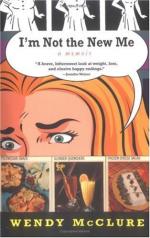After a photograph owned by Mrs. Harriet Chapman of Charleston, Illinois. Mrs. Chapman is a grand-daughter of Sarah Bush Lincoln, Lincoln’s step-mother. Her son, Mr. R.N. Chapman of Charleston, Illinois, writes us: “In 1858 Lincoln and Douglas had a series of joint debates in this State, and this city was one place of meeting. Mr. Lincoln’s step-mother was making her home with my father and mother at that time. Mr. Lincoln stopped at our house, and as he was going away my mother said to him: ’Uncle Abe, I want a picture of you.’ He replied, ’Well, Harriet, when I get home I will have one taken for you and send it to you.’ Soon after, mother received the photograph she still has, already framed, from Springfield, Illinois, with a letter from Mr. Lincoln, in which he said, ’This is not a very good-looking picture, but it’s the best that could be produced from the poor subject.’ He also said that he had it taken solely for my mother. The photograph is still in its original frame, and I am sure is the most perfect and best picture of Lincoln in existence. We suppose it must have been taken in Springfield, Illinois.”]
[Illustration: John Potter.
From a recent photograph. John Potter, born November 10, 1808, was a few months older than Lincoln. He is now living at Petersburg, Illinois. He settled in the country one and one-half miles from New Salem in 1820. Mr. Potter remembers Lincoln’s first appearance in New Salem in July, 1831. He corroborates the stories told of his store, and of his popularity in the community, and of the general impression that he was an unusually promising young man.]
LINCOLN STUDIES GRAMMAR.
As soon as the store was fairly under way Lincoln began to look about for books. Since leaving Indiana, in March, 1830, he had had, in his drifting life, little leisure or opportunity for study—though he had had a great deal for observation. Nevertheless his desire to learn had increased, and his ambition to be somebody had been encouraged. In that time he had found that he really was superior to many of those who were called the “great” men of the country. Soon after entering Macon County, in March, 1830, when he was only twenty-one years old, he had found he could make a better speech than at least one man who was before the public. A candidate had come along where John Hanks and he were at work, and, as John Hanks tells the story, the man made a speech. “It was a bad one, and I said Abe could beat it. I turned down a box, and Abe made his speech. The other man was a candidate—Abe wasn’t. Abe beat him to death, his subject being the navigation of the Sangamon River. The man, after Abe’s speech was through, took him aside, and asked him where he had learned so much and how he could do so well. Abe replied, stating his manner and method of reading, what he had read. The man encouraged him to persevere.”




